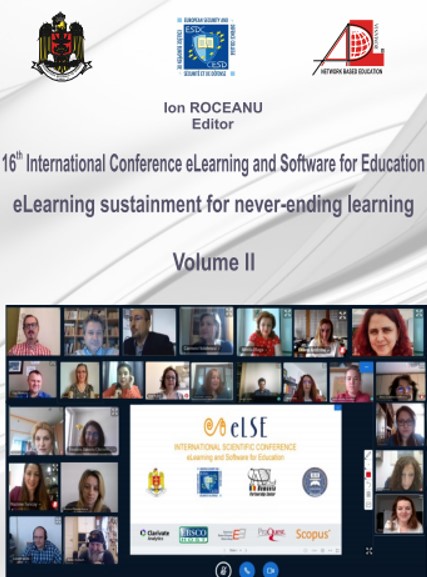NATION-WISE AFFILIATION PREDICTION FOR THE REAL-TIME
NATION-WISE AFFILIATION PREDICTION FOR THE REAL-TIME
Author(s): Chaman Verma, Zoltán Illés, Veronika StoffováSubject(s): Higher Education , Demography and human biology, ICT Information and Communications Technologies, Distance learning / e-learning
Published by: Carol I National Defence University Publishing House
Keywords: Affiliation prediction; Machine learning; Real-time; ICT;
Summary/Abstract: To support the real-time prediction of the student demographic features such as gender, age, study level, etc., in a different type of online surveys and questionnaires machine learning played a vital role. In this paper, the authors applied five supervised machine learning algorithms to predict the student's association with their homeland (native) towards the technology used in their university. A primary dataset has been collected from the Indian and Hungarian University. The present model might be useful to identify the student category based on their native nation towards their thinking for the technology in higher education. The identification of the nation wise affiliation might help to understand the satisfaction, usability, technology available and attitude of students for the ICT as well. Considering the binary classification problem, the student's nation wise affiliation class set to as a response variable and the rest of the features was considered as predictors. A student's nation-wise affiliation class has two values such as Hungarian students and Indian students. In the Weka experimental environment, the primary dataset of 331 records with 38 attributes was analyzed using the Logistic Regression (LR), Support Vector Machine (SVM), Multilayer Perceptron (MP), K-nearest neighbor (KNN) and Random Forest (RF). The performances and execution time of each classifier was compared with statistical t-test at the 0.05 confidence level. The authors performed two major experiments with training ratio and cross-validation method using these classifiers. The first experiment found no significant difference between the accuracies of the classifiers in the affiliation prediction. Also, the RF classifier outperformed others with the highest prediction accuracy of 87.56% in 0.07 seconds. The findings of the second experiment proved that the RF attained the highest prediction accuracy of 89.33% as compared to others in 0.08 seconds. This experiment also evidenced the prediction accuracies of the KNN, MP, and LR are found a significant difference as compared to the RF and SVM classifier. The statistical t-test also proved that the execution times of the SVM, KNN, and LR found significantly different than others in each experiment. Hence, the authors presented the RF model to identify the student's affiliation (Indian or Hungarian) towards technological use after making a comparison of various performance measures.
Journal: Conference proceedings of »eLearning and Software for Education« (eLSE)
- Issue Year: 16/2020
- Issue No: 02
- Page Range: 284-290
- Page Count: 7
- Language: English

